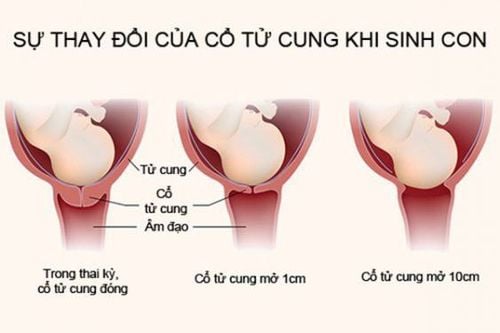This is an automatically translated article.
The article is professionally consulted by Specialist Doctor II Huynh Thi Hien - Obstetrician and Gynecologist - Department of Obstetrics and Gynecology - Vinmec Nha Trang International HospitalFetal heart rate monitoring must be conducted closely before and during labor, thereby detecting any abnormal situations for timely handling, ensuring the safety of mother and baby.
1. What is fetal heart rate monitoring?
The process of checking the health of the fetus during labor and birth using a special fetal heart rate monitor.2. Why monitor fetal heart rate during labor and delivery?
Fetal heart rate monitoring can assist in detecting abnormal changes in heart rate during labor, thereby providing treatment options. Monitoring the fetal heart rate is also a way to avoid having to treat unnecessary problems. If nothing else, a healthy fetal heart rate is an indicator of the safety of continuing labor.
3. Method of tracking
There are two methods of monitoring fetal heart rate during labor:
Fetal heart rate method: The doctor will place a listening device on the mother's abdomen after each certain cycle. Monitor by monitor: Use the monitor tool to continuously record the fetal heart rate and uterine contractions during labor. Depending on a number of factors such as rules, hospital policy, risk assessment, labor status, doctors will recommend an appropriate method of fetal heart rate monitoring. If the woman has no complications or risk factors in labor, any of the two methods of monitoring mentioned above can be chosen.

Method of auscultation The doctor will place a stethoscope or a Doppler ultrasound probe on the mother's abdomen to listen to the baby's heart at a certain time. For women with risk factors for abnormalities during labor, or for women who have problems during labor, the fetal heart rate will be monitored and recorded with more frequency.
Method of monitoring fetal heart by monitor In fetal heart rate monitor, medical staff will use special equipment to assess the response of fetal heart rate to uterine contractions. This parameter is continuously recorded by the monitor on paper. After a certain time, the doctors and midwives will check the information on the paper. The inspection frequency will be thicker if any problems arise.
Fetal heart monitor monitoring can be done externally, internally, or both. During the monitoring process, pregnant women need to lie on the bed, however, they can find themselves the most comfortable position.
External monitoring method With this method, there will be two belts wrapped around the pregnant woman's abdomen, in which one uses the Doppler ultrasound probe to monitor the fetal heart rate, the other is used to monitor the length of each contractions and the time between contractions.
Internal monitoring An electrode patch is placed on the fetus, at the point closest to the cervix, usually the scalp, to record the baby's heartbeat. Uterine contractions can also be monitored with an intrauterine manometer, which is inserted vaginally into the uterus. Internal monitoring can only be performed when the amniotic sac has ruptured.
4. What to do when the fetal heart rate is abnormal?
An abnormal fetal heart rate does not always lead to concern. If an abnormal heart rhythm is detected, your doctor may order some other tests to better evaluate the fetal condition.
Whenever there is an abnormal fetal heartbeat, the doctor will first find out the cause, as well as give a timely treatment plan to always provide enough oxygen for the baby, for example, ask the mother to Change lying and sitting positions. If these options don't work, or the test results indicate a problem with the fetus, doctors may decide to remove the fetus immediately by cesarean section, or by forceps or vacuums.

Please dial HOTLINE for more information or register for an appointment HERE. Download MyVinmec app to make appointments faster and to manage your bookings easily.
Article referenced source: Acog.org














